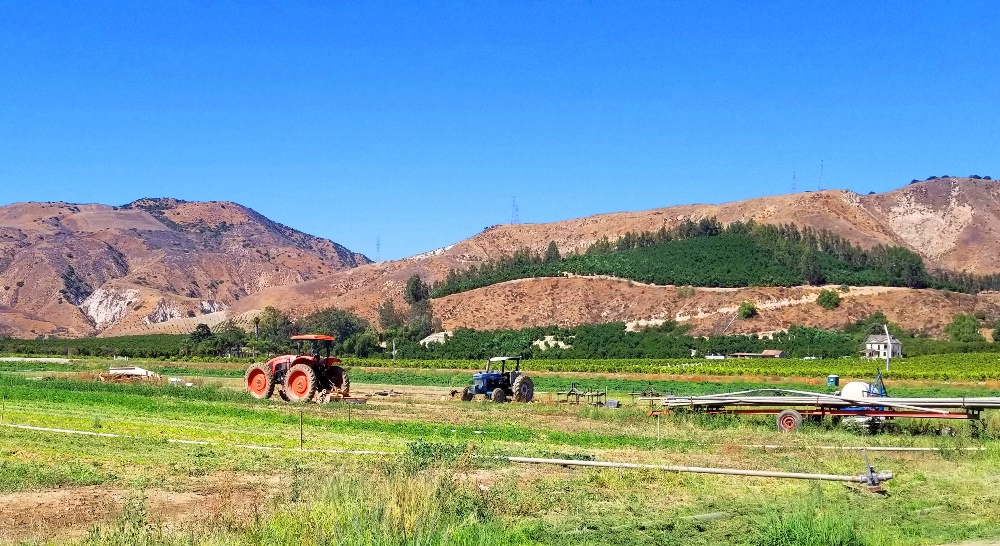 View Winners →
View Winners → Trains, Tamales and Honey in Heritage Valley

By Greg Aragon
California has a myriad of small, old towns and I am always looking to explore them. Such was the case this past weekend when I and the family headed down historic Highway 126 and through Heritage Valley.
Located between the I-5 Freeway in Santa Clarita and the city of Ventura, Heritage Valley is comprised of the quaint towns of Santa Paula, Fillmore, and Piru, and also the Rancho Camulos National Historic Landmark. This rural area provides scenic drives and visitors a chance to ride in a vintage train or a hot air balloon, sample local food and produce, explore museums and more.
Our first stop in the Valley was Fillmore. To get there we drove down Highway 126 past vegetable stands and crops, open fields, and valleys flanked by the San Cayetano Mountains of Los Padres National Forest.
Once in Fillmore, we found a quiet, pre-WWII styled town, with lots old buildings. We also found the Fillmore and Western Railway, a historic rail yard full of vintage trains used for Hollywood movie shoots and for dinner and specialty train rides.
In October, the highlight of the Fillmore and Western Railway is the Pumpkinliner. This vintage locomotive takes passengers from the station in Fillmore to “The Patch,” a private pumpkin patch in Santa Paula. Along the way, it passes by citrus and avocado groves, back yards, sports fields, warehouse packing plants, horse ranches, orchard farms and more.
The train offers open-air cars with bench seating and indoor seating in antique Pullman-type trains from the 1920s and ‘30s. On our journey we sat inside on comfortable reclining chairs, sipping pumpkin ale, listening to the old-fashioned train whistle, and watching beautiful scenery drift bye. The outdoor car was packed with kids and their parents.
After a 40-minute ride, the train rolled into the hidden pumpkin patch, where we disembarked and wondered around a mini fairy tale land of pumpkins, Jolly Jumpers, a carousel, a haunted hay maze, arts and crafts, and a snack bar. At The Patch we bought a pumpkin, and then rode back to Fillmore for lunch at La Fondita Bakery and Restaurant.
Located across the street from the Railway Station, La Fondita Bakery welcomed us with the warm aroma of fresh baked “pan dulce,” which is the name for Mexican sweet bread. After purchasing a few pastries, we walked next door to the restaurant portion of the bakery, where we ordered a half-dozen tamales and a couple old fashioned Cokes in a real glass bottle.
After lunch we headed back down Highway 126 to Bennett’s Honey Farm, a small, family-owned operation that produces, packs and distributes fine local honey in Fillmore. Offering free honey tastings, the farm gets its nectar from Ventura County. Many claim this region is home to California’s best sage and wildflower fields, which yield great tasting honey.
During our tasting we sampled honey flavored with sage and wildflowers, along with avocado, pomegranate, buckwheat, cloves, eucalyptus and a spicy hot one too. To filter their honey, the farm uses a process called “gravity straining” which allows the honey to retain its natural perfect components. “This takes a little longer but we believe it’s necessary to provide the highest quality honey available,” says the farm.
All of the honey I sampled was very good, but I ended up purchasing a small bottle of wildflower honey because the clerk told me it was their most popular.
Our last adventure in Heritage Valley was a stop at Rancho Camulos, one of the best surviving examples of an early California ranch life in its original rural environment. Located near the city of Piru, the rancho and its museum stand as vibrant reminders of California’s rich Spanish and Mexican heritage.
Established in 1853, Rancho Camulos was once part of a 48,000-acre Mexican ranch with up to 200 people living on the property during peak years of agricultural production. It was a noted stop along the main stage coach route and also the setting for Helen Hunt Jackson’s 1884 novel “Ramona.” This is a romantic tale of a young girl who falls in love with a Native American ranch hand.









































































































